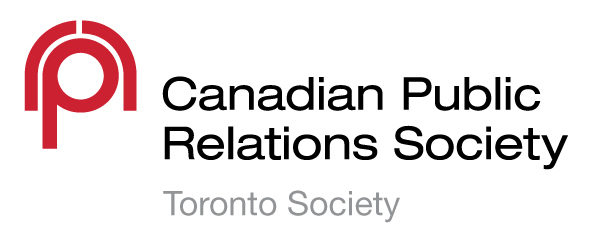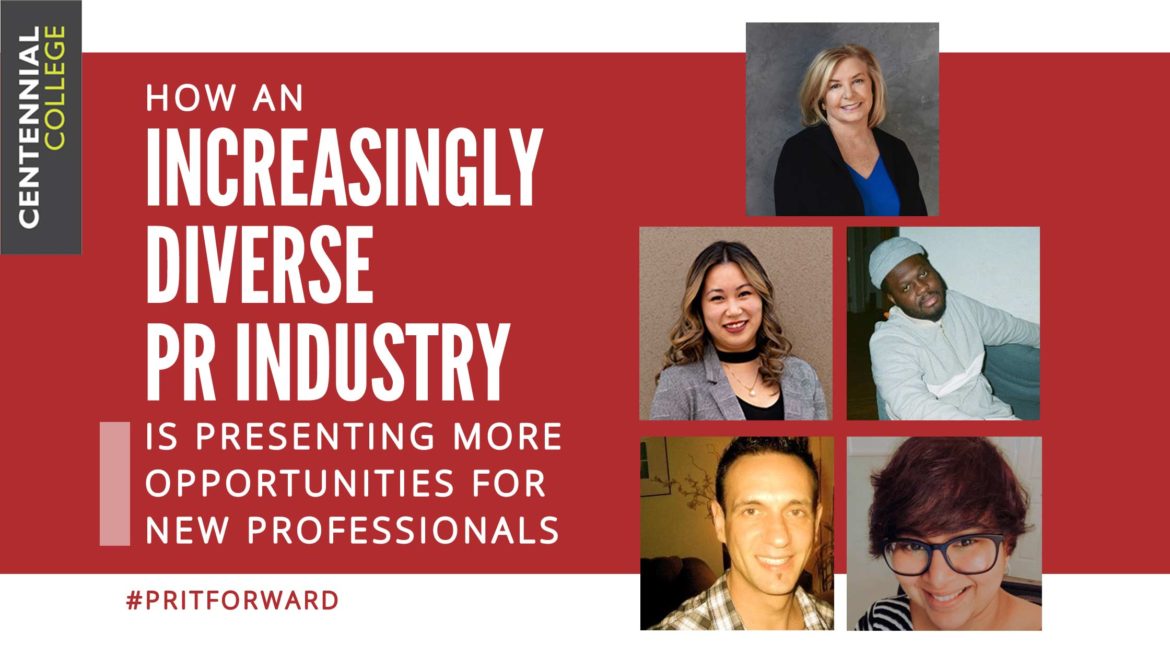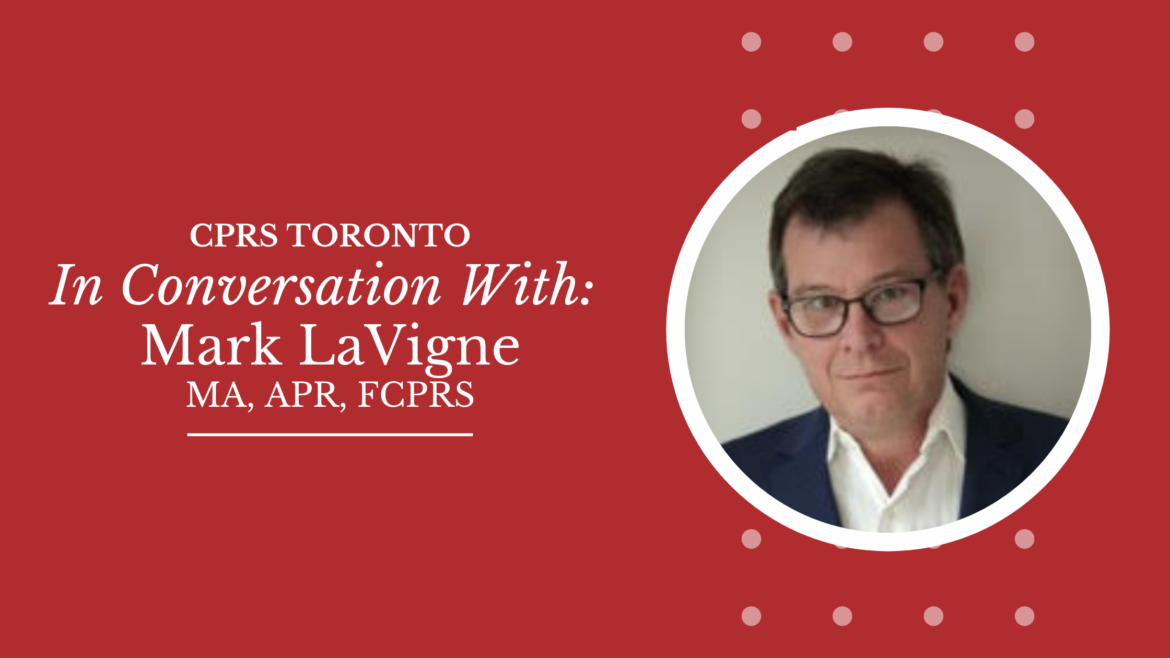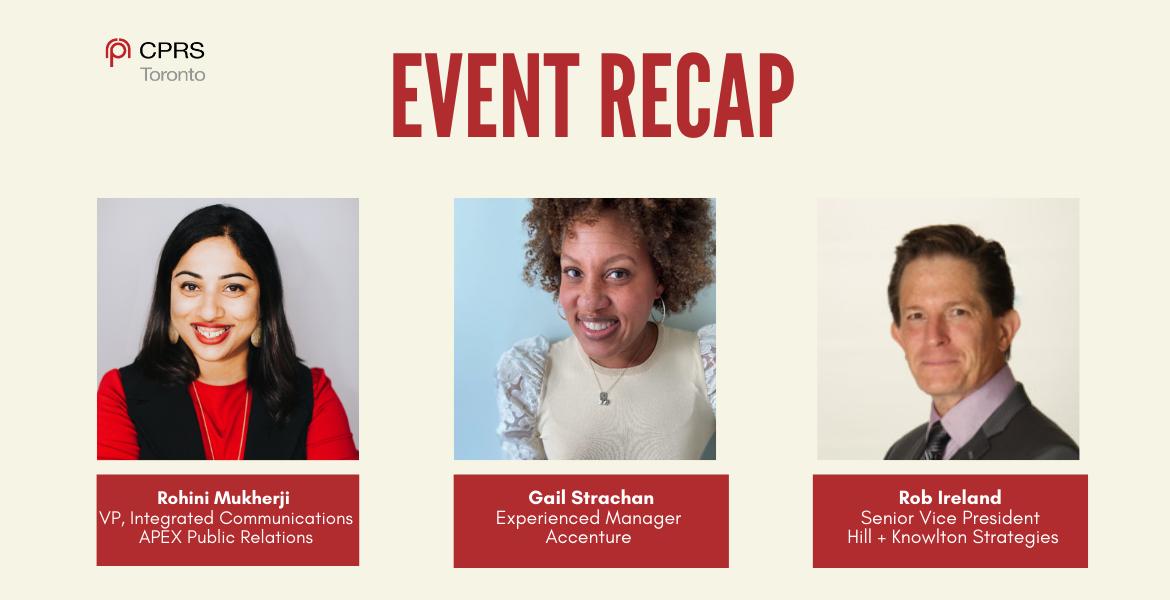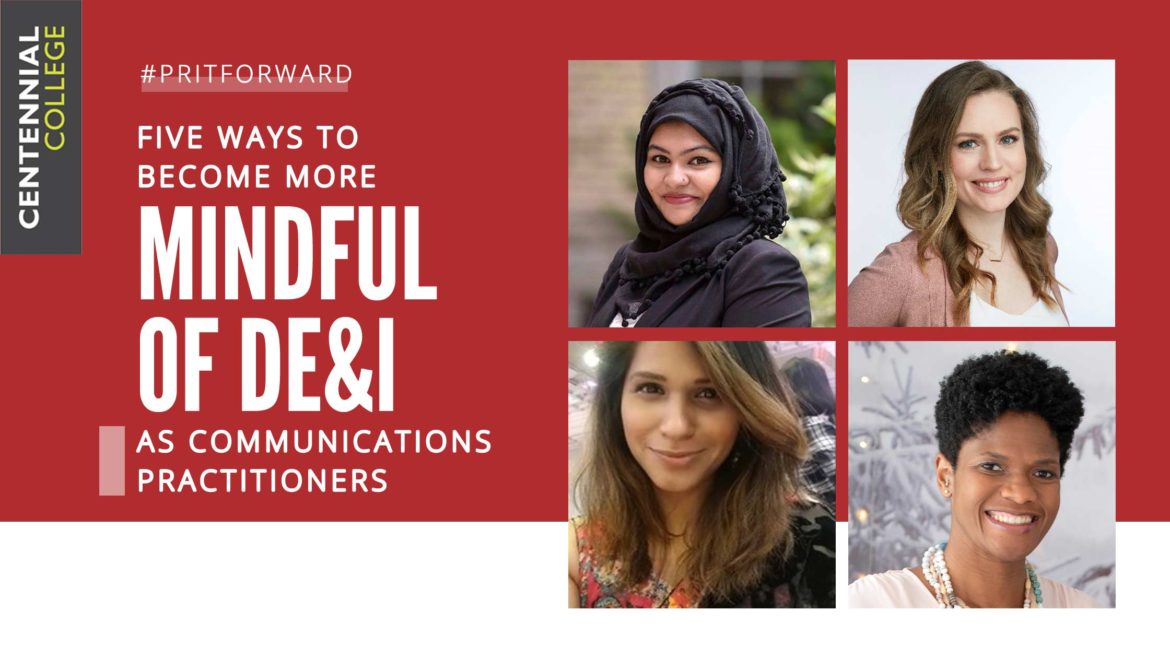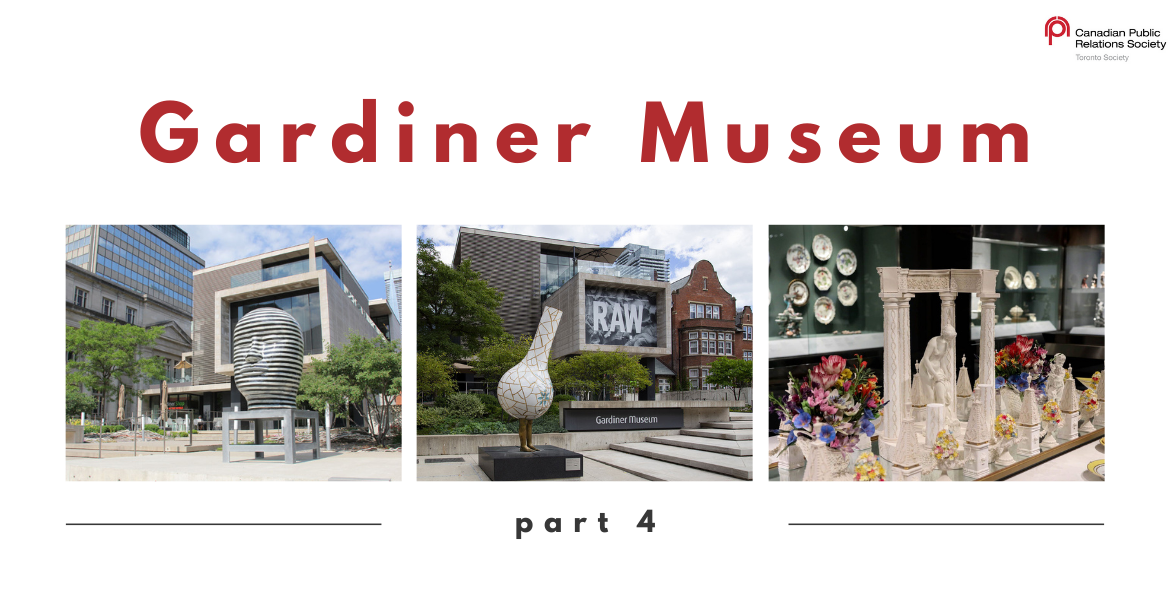Written by: Sarah Heiman, Rebecca Moe, Daisy Johanna Uy and Charmaine Blair, CCPR postgraduate students, Centennial College
The movement for diversity in our industry is growing, and we sat down with students, professionals and educators to discuss its impact.
We had a conversation about representation of women in leadership roles, emerging acceptance in our industry and what we can do to make the industry more inclusive with:
- Judy Lewis (chair of CCPRF and co-founder and partner of Strategic Objectives),
- Michelle Nguyen (co-founder, lead writer and social strategist of Super Duper Studios),
- Ananya Mani (senior internal communications specialist of Ingram Micro),
- Gabriel Bedard (human rights and equity advisor and GCE instructor and facilitator at Centennial College),
- Jerome Kitenge (a current student of the Centennial College Bachelor of Public Relations program).
On culture
Judy emphasizes that we must create welcoming and accepting cultures for women navigating the integration of career and life. Women need to feel confident when striving for executive roles, but also supported if they have to take on the role as primary caregiver for their families.
Michelle says we need to change the narrative of stereotypes that women are “multi-taskers” and can “do it all.” When everyone shares their wins and losses with transparency and honesty, this curates authenticity and can inspire people to not worry about perfection. We’re all human, after all. Choosing to share these challenges and successes can foster supportive workplace cultures.
On commitments
“Our words and actions matter,” Judy said, in respect to building cultures that cherish diversity. For example, Strategic Objectives committed to fostering a culture of DE&I inside and outside of their organization. They have cut ties with suppliers and organizations that don’t align with this commitment, and have begun reaching out to partner with new suppliers that believe in these values. We can pave the way in our spheres of influence; as Ananya says, “we are all influencers.”
On awareness and education
Gabriel proposes we build awareness of ingrained racial biases that can cause microaggressions people entering the workforce may face. We can acknowledge them, begin to dismantle them and create more accepting workplace cultures. Students can help, as they leave schools with concrete knowledge of and passion for DE&I. Jerome perfectly summarizes many students’ thoughts by stating, “If the industry is able to accept [students like myself] and we’re able to change it to a new direction, I would say … the future looks bright.”
On mentorship
Ananya brings great advice for professionals. “Pay it forward! We bring unique skills so find those opportunities to mentor someone, but also ask for mentorship.” Building these relationships can broaden our perspectives. Mentors don’t always have to be someone who is more experienced than their mentees. Having relationships with those who hold unique perspectives help inform journeys in DE&I. Since students are receiving training in these areas, they have knowledge established professionals can benefit from.
Michelle also brought up the role of managers and employers. They can work to make room for diverse juniors in their positions, bringing new thoughts and perspectives to the table.
On sharing and listening
By having open conversations between a diverse group, we learned a lot! As communicators, we can expand our knowledge and perspectives by sharing and listening to each other’s stories. Jerome emphasizes that we are all unique and that everyone should have the ability to share their authentic stories. “We all have something to say,” he says. It’s about learning how to find confidence, project our voices and show our passion for the industry.
Thanks again to Judy Lewis, Michelle Nguyen, Ananya Mani, Jerome Kitenge and Gabriel Bedard for sharing their perspectives and knowledge with us. It is encouraging to know so many advocates for DE&I are pushing the change in the communications industry and beyond. You can listen to the full episode by clicking here.
The Future of PR Looks Like Us campaign
This blog is part of a series called The Future of PR Looks Like Us, a meaningful campaign led by a team of Centennial College public relations and corporate communications postgraduate students in partnership with the Canadian Council of Public Relations Firms (CCPRF). Our goal is to highlight the importance of diversity, equity and inclusion (DE&I) in the public relations (PR) industry.
This blog accompanies a podcast series exploring the diverse voices that have shaped the industry and featuring work done by PR students from Centennial College. Learn about diverse figures of PR’s past that have shaped the industry for BIPOC professionals today. Listen in to uncover misconceptions and gain a sense of the opportunities the industry holds. The series closes by emphasizing the bright future PR professionals and students see for the growing diversity within the industry.
